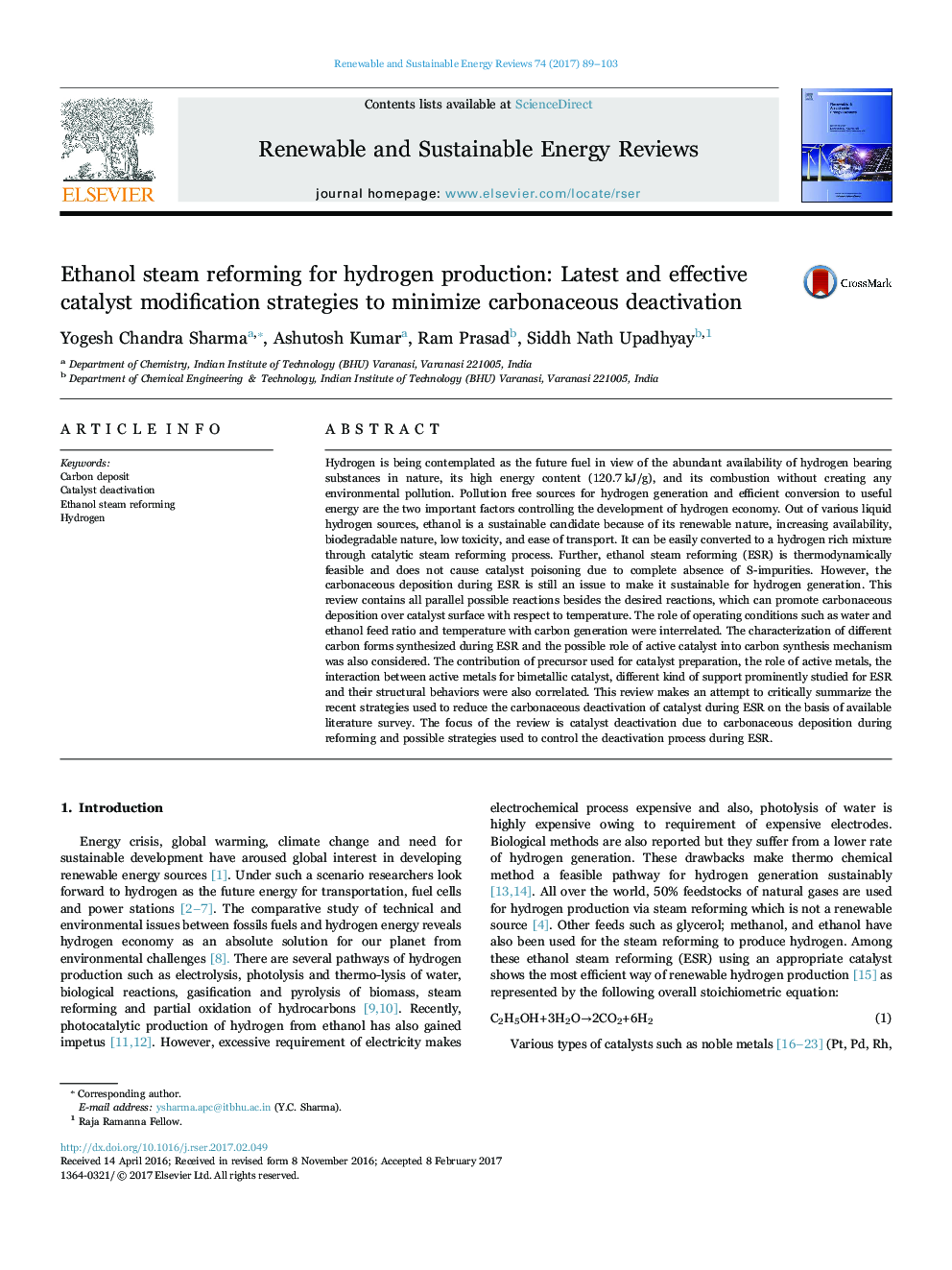| کد مقاله | کد نشریه | سال انتشار | مقاله انگلیسی | نسخه تمام متن |
|---|---|---|---|---|
| 5483107 | 1522312 | 2017 | 15 صفحه PDF | دانلود رایگان |
عنوان انگلیسی مقاله ISI
Ethanol steam reforming for hydrogen production: Latest and effective catalyst modification strategies to minimize carbonaceous deactivation
ترجمه فارسی عنوان
رطوبت بخار اتانول برای تولید هیدروژن: جدیدترین و موثرترین راهبردهای اصلاح کاتالیست برای کاهش غیر فعال کردن کربن
دانلود مقاله + سفارش ترجمه
دانلود مقاله ISI انگلیسی
رایگان برای ایرانیان
کلمات کلیدی
ذخایر کربن، غیر فعال کردن کاتالیست اصلاح بخار اتانول، هیدروژن،
موضوعات مرتبط
مهندسی و علوم پایه
مهندسی انرژی
انرژی های تجدید پذیر، توسعه پایدار و محیط زیست
چکیده انگلیسی
Hydrogen is being contemplated as the future fuel in view of the abundant availability of hydrogen bearing substances in nature, its high energy content (120.7Â kJ/g), and its combustion without creating any environmental pollution. Pollution free sources for hydrogen generation and efficient conversion to useful energy are the two important factors controlling the development of hydrogen economy. Out of various liquid hydrogen sources, ethanol is a sustainable candidate because of its renewable nature, increasing availability, biodegradable nature, low toxicity, and ease of transport. It can be easily converted to a hydrogen rich mixture through catalytic steam reforming process. Further, ethanol steam reforming (ESR) is thermodynamically feasible and does not cause catalyst poisoning due to complete absence of S-impurities. However, the carbonaceous deposition during ESR is still an issue to make it sustainable for hydrogen generation. This review contains all parallel possible reactions besides the desired reactions, which can promote carbonaceous deposition over catalyst surface with respect to temperature. The role of operating conditions such as water and ethanol feed ratio and temperature with carbon generation were interrelated. The characterization of different carbon forms synthesized during ESR and the possible role of active catalyst into carbon synthesis mechanism was also considered. The contribution of precursor used for catalyst preparation, the role of active metals, the interaction between active metals for bimetallic catalyst, different kind of support prominently studied for ESR and their structural behaviors were also correlated. This review makes an attempt to critically summarize the recent strategies used to reduce the carbonaceous deactivation of catalyst during ESR on the basis of available literature survey. The focus of the review is catalyst deactivation due to carbonaceous deposition during reforming and possible strategies used to control the deactivation process during ESR.
ناشر
Database: Elsevier - ScienceDirect (ساینس دایرکت)
Journal: Renewable and Sustainable Energy Reviews - Volume 74, July 2017, Pages 89-103
Journal: Renewable and Sustainable Energy Reviews - Volume 74, July 2017, Pages 89-103
نویسندگان
Yogesh Chandra Sharma, Ashutosh Kumar, Ram Prasad, Siddh Nath Upadhyay,
